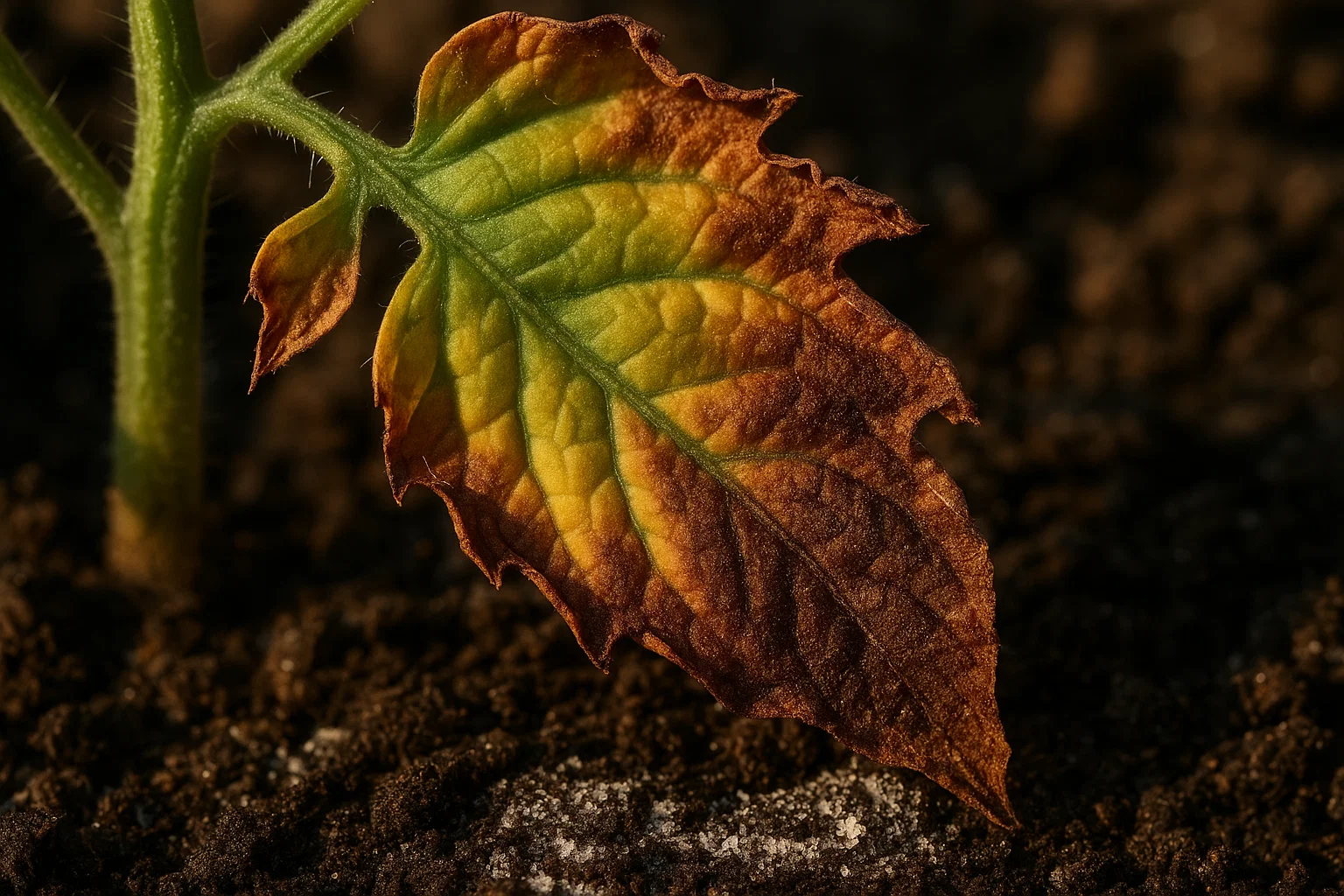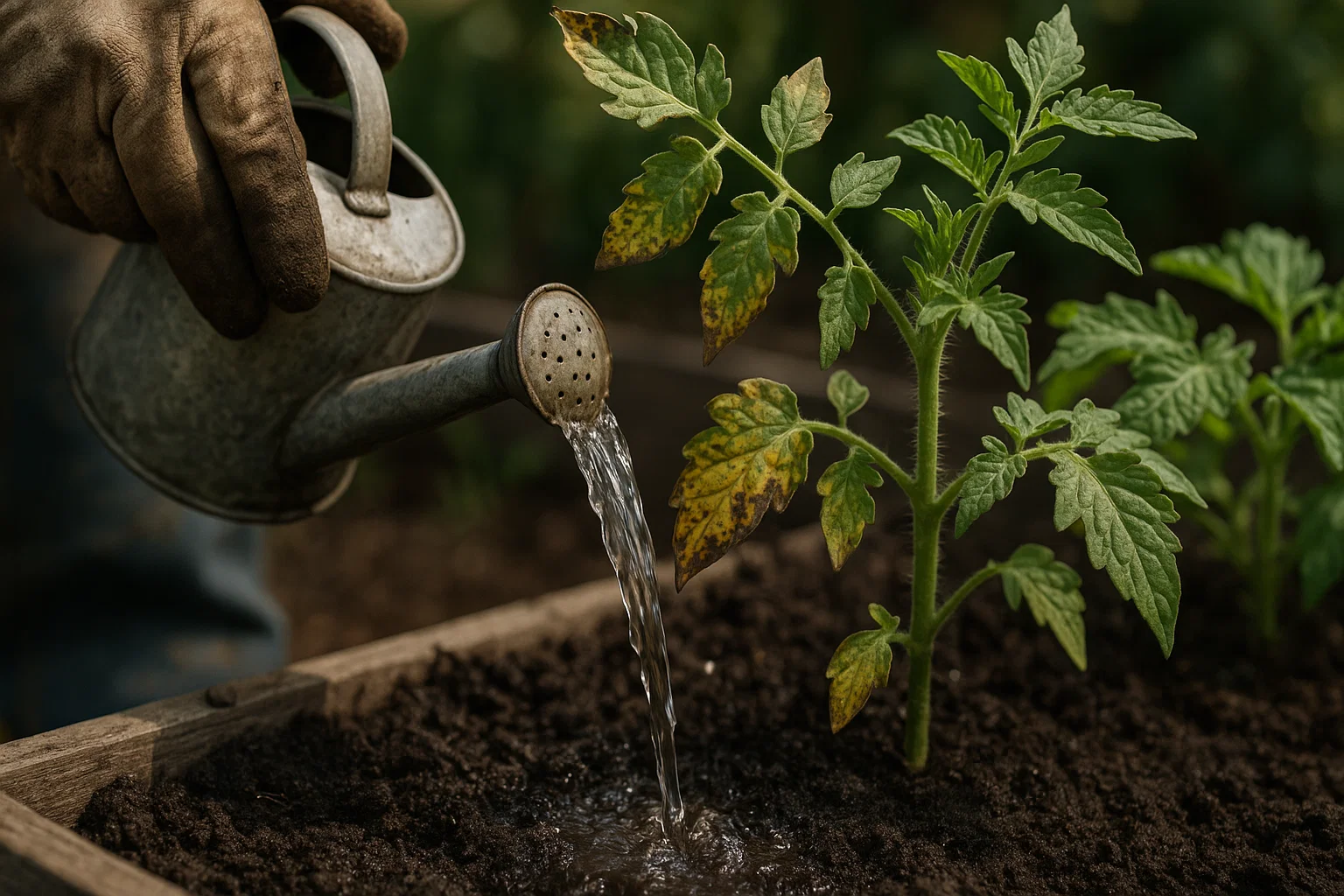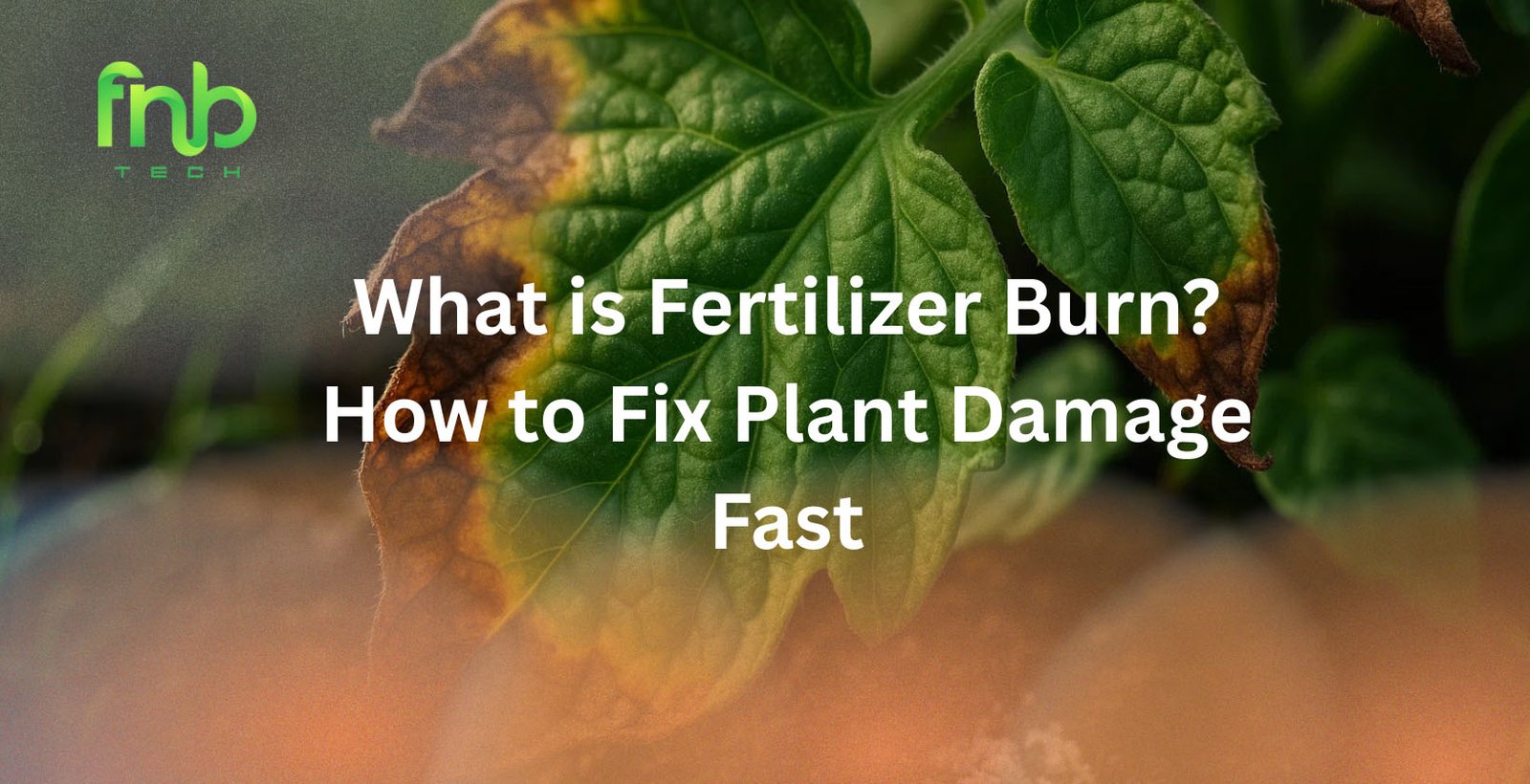Fertilizer is a crucial part of plant care, providing essential nutrients to promote growth and health. However, overdoing it or using the wrong type of fertilizer can have detrimental effects on your plants, leading to a condition known as fertilizer burn. This issue can severely damage your garden, lawn, or indoor plants. So, what exactly is this, and how can you fix it quickly?
In this article, FnB Tech will delve into the causes and symptoms of fertilizer overdose, how to fix plant damage fast, and preventative measures to avoid this issue in the future. So, let’s begin!
Contents
What Is Fertilizer Burn?

Fertilizer burn occurs when a plant absorbs too much fertilizer, typically due to overapplication or improper application methods. Fertilizers contain essential nutrients like nitrogen, phosphorus, and potassium, but if used excessively, they can “burn” the plant’s roots and leaves. The high concentration of salts in fertilizers can draw water out of the plant, leading to dehydration and damage.
Fertilizer overdose can happen with any type of fertilizer, whether organic or synthetic, but the risk increases with synthetic fertilizers due to their high nutrient concentration. Plants can also suffer from fertilizer burn if they are exposed to a dry environment or lack sufficient water to dilute the nutrients in the soil.
Symptoms of Fertilizer Burn
Fertilizer overdose damage can manifest in several ways, depending on the severity. Here are some common symptoms:
-
Yellowing Leaves: The plant’s leaves may start to turn yellow, especially at the tips, as a result of dehydration and nutrient imbalances.
-
Brown Leaf Tips: One of the most common signs of fertilizer burn is the appearance of brown, crispy leaf tips. The edges of the leaves appear scorched or burnt.
-
Wilting: Despite sufficient water, plants with fertilizer burn may start wilting as the nutrients interfere with the plant’s ability to absorb water properly.
-
Stunted Growth: Fertilizer burn can stunt the growth of plants, as the roots are damaged and unable to effectively take up water and nutrients.
-
Root Damage: In severe cases, fertilizer burn can cause roots to burn or become damaged, hindering the plant’s overall ability to absorb nutrients and water.
How Does Fertilizer Burn Happen?
Fertilizer burn happens when the concentration of fertilizers in the soil is too high for the plant to handle. There are a few common causes:
1. Over-application of Fertilizer
This is the most common cause of fertilizer overdose. If you apply more fertilizer than recommended, it creates an excess of nutrients that plants cannot absorb. This causes the soil to become highly concentrated with salts, which can draw water out of the plant’s roots.
2. Applying Fertilizer in Hot or Dry Conditions
Fertilizer overdose is more likely to occur in hot or dry conditions. When the soil is dry, plants struggle to take in enough water to dilute the fertilizer. High temperatures exacerbate this by causing the soil to dry out even faster.
3. Using Fertilizer Without Adequate Watering
Plants need water to help move nutrients from the soil to their roots. Without enough water, the fertilizer can build up around the roots and cause toxicity. Fertilizer should always be applied with plenty of water to help distribute it evenly and reduce the risk of burn.
4. Incorrect Fertilizer Type for Plant Needs
Not all fertilizers are suitable for all plants. For instance, using a fertilizer designed for one type of plant on another can cause nutrient imbalances. This is especially true for lawns, where different grasses require specific fertilizers.
5. Concentrated Fertilizer Application
Using too much concentrated fertilizer, such as a highly concentrated liquid or granular fertilizer, can result in a stronger-than-necessary nutrient dose. This can easily cause a burn on delicate plants, including fertilizer burn grass.
Read also: Type of Fertilizer in Agriculture
How to Fix Fertilizer Burn Fast

If you’ve noticed signs of fertilizer overdose on your plants, don’t panic. There are several steps you can take to fix the damage and help your plants recover.
1. Rinse the Soil with Water
The first step to fixing fertilizer burn is to dilute the excess fertilizer. Immediately water the affected plants thoroughly with clean water. This will help flush out the concentrated fertilizer from the soil, providing relief to the roots.
Make sure to water the plants deeply, ensuring that the water reaches the roots. For grass or lawn areas affected by fertilizer overdose, it might be necessary to run a sprinkler for an extended period to ensure the water is evenly distributed.
2. Prune Damaged Parts
If the fertilizer burn is visible on the leaves, it may be necessary to prune the damaged parts. Removing the burnt leaves will not only improve the plant’s appearance but also reduce the plant’s energy expenditure on dead or damaged tissue. Make sure to use clean, sharp scissors or pruning shears to avoid further injury.
3. Replace the Soil (for potted plants)
For indoor plants or potted plants, the best way to fix fertilizer overdose is to replace the soil. If the fertilizer has caused extensive damage to the roots, removing the affected soil and replacing it with fresh, clean soil will give the plant a fresh start. Make sure to water the plant thoroughly after re-potting.
4. Avoid Fertilizing for a While
After experiencing fertilizer burn, it’s important to give the plant some time to recover before fertilizing again. Allow the plant to regain its strength and natural nutrient balance before applying any more fertilizers. Over-fertilization can cause the same problem again, so take extra care.
5. Provide Extra Moisture
Fertilizer burn often causes dehydration, so it’s essential to keep the soil moist to help the plant recover. Use a gentle watering schedule, but don’t overdo it, as overly wet soil can lead to root rot. Consistent moisture will help flush out any remaining nutrients that might be harming the plant.
6. Adjust Fertilizer Application Method
For future fertilization, be sure to follow the manufacturer’s instructions carefully. Always use the correct amount of fertilizer for your specific plant type, and apply it when the plant’s growing season is optimal.
Avoid applying fertilizer during dry or hot weather conditions, and always water the soil before and after fertilization.
How to Prevent Fertilizer Burn
Preventing fertilizer burn is far easier than fixing it once it occurs. Here are some tips to avoid fertilizer burn in the first place:
1. Follow Proper Fertilizer Guidelines
Ensure that you are following the correct fertilizer guidelines for your specific plants. Each plant has different nutrient needs, so make sure you’re using the right type of fertilizer in the correct amount.
2. Use Slow-Release Fertilizers
Slow-release fertilizers are a good option to prevent fertilizer overdose. These fertilizers release nutrients gradually over time, which reduces the risk of overloading the soil with too many nutrients at once.
3. Avoid Fertilizing During Extreme Weather
It’s best to avoid fertilizing when the weather is too hot or dry. If you’re fertilizing your garden, try to do it in the early morning or late evening when the temperatures are lower. This will give your plants the best chance to absorb the nutrients before the sun’s heat causes them to evaporate.
4. Always Water Before and After Fertilizing
Watering the soil before and after fertilizing ensures that the fertilizer is well-diluted and can be absorbed effectively by the plant. This helps prevent the high concentration of salts from affecting the plant’s roots.
5. Use Organic Fertilizers
While synthetic fertilizers can be efficient, organic fertilizers tend to be gentler on plants and less likely to cause fertilizer burn. Organic options, like compost or manure, release nutrients more gradually and are less likely to cause damage when used properly.
People Also Ask (PAA)
1. How do you know if your plant is suffering from fertilizer burn?
The symptoms of fertilizer burn include yellowing or browning of the leaves, wilting, stunted growth, and root damage. If you notice these signs after fertilizing, it’s likely your plant is suffering from fertilizer burn.
2. Can you reverse fertilizer burn?
Yes, you can reverse fertilizer burn by flushing the soil with water to dilute the excess fertilizer, pruning damaged parts, and providing proper care. However, severe cases may require replacing the soil or repotting the plant.
3. Can fertilizer burn kill a plant?
Fertilizer overdose can kill a plant if the damage is severe and the roots are affected. If the plant is not given proper care and the fertilizer concentration is not diluted, the plant may die due to dehydration and nutrient imbalance.
4. Can fertilizer burn grass?
Yes, fertilizer burn grass is a common issue, especially when too much fertilizer is applied to a lawn. Over-fertilizing grass can cause the blades to turn brown and crispy. The solution is to flush the area with water and refrain from fertilizing for a while.
5. How do you prevent fertilizer burn in plants?
To prevent fertilizer burn, always follow the recommended application rates, water the soil thoroughly before and after fertilizing, avoid fertilizing during hot or dry conditions, and consider using slow-release fertilizers or organic options.
Conclusion
Fertilizer burn can cause serious damage to your plants, but with prompt action, the damage can be mitigated. Whether it’s fertilizer burn grass or other plants, understanding the causes, symptoms, and remedies is essential for restoring your garden to its full potential.
By following the best practices for fertilization and being proactive, you can prevent fertilizer burn from harming your plants and ensure they thrive for years to come.
Pippo is passionate about coffee beans, exploring their unique varieties and cultural significance. He has a strong interest in agritech, focusing on innovations that drive sustainable farming. Beyond agriculture, he is also dedicated to the field of aquaculture and its future potential. His curiosity and enthusiasm connect these fields, reflecting a commitment to sustainability and growth.


